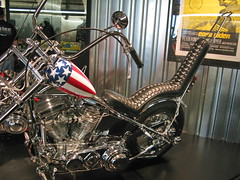1950’s Hollywood Movie Memories – New Competition And New Markets
1950’s Hollywood Movie Memories – New Competition And New Markets
By 1950 it was estimated that over 10.5 million U.S. households had a television, and that number was climbing rapidly. Post-war affluence seemed ripe for the taking. However, with this affluence came a number of alternate leisure activities.
Not only was television grabbing a larger share of the entertainment pie, but there were also newly created opportunities outside the movie theater. A couple of examples would be; ‘fast food restaurants,’ and ‘drive-ins’. It didn’t take long for these to catch on and gain their share of the publics leisure time and dollar.
The motion picture industry needed to again change a large portion of its focus. Older viewers became the ones most likely to stay home and watch television. The younger market was growing in both size and spending power, and the youth-oriented movie goer had little interest in films
produced to appeal to the older market. They demanded something fresh, and whenever possible a bit of a rebellious edge.
Hollywood found its creativity challenged in reaching for this new market. They tried the “bigger is better” approach, hoping to draw people away from the small-screen television and back into the full-color, large-screen motion picture theatre. They experimented with gimmicks such as 1952’s 3-D efforts Bwana Devil, and This is Cinerama. 1953 brought to the big-screen lavish new color filming techniques such as 20th Century-Fox’s CinemaScope production of The Robe, and Paramount’s Vista Vision presentation of White Christmas.
While these efforts worked to some extent, Hollywood realized that these newer color production methods were very costly and would not solve their problem. They had to be more topic specific to reach the teenage
youth-oriented market by providing them with both stories and stars they could relate to.
Motion pictures were specifically produced to include the popularity of Rock and Roll music in their story lines and literally on the screen. Many of the most popular singers and singing groups of this time would appear in these films much to the delight of the younger fan. An example being Rock Around the Clock, featuring disc jockey Allan Freed, Bill Haley and His Comets (performing the title song), The Platters, and more. Don’t Knock the Rock, a response to the older generations lack of acceptance of rock and roll music. There were biographical films like The Buddy Holly Story, and La Bamba which told the story of the careers of both Buddy Holly and Richie Valens as well as their tragic ending along with fellow star The Big Bopper in a 1959 plane crash.
Hollywood’s
marketing efforts in this area proved very successful with the youth market reaching billion per year. Hollywood hit a goldmine in its exploitation of this market and, with teenagers becoming more socially rebellious, capitalized on their sentiment with films like The Blackboard Jungle, High School Confidential, The Wild One, and Rebel Without a Cause.
It wasn’t only the pictures portraying rebellion, it was also the stars. Marlon Brando, James Dean, and Elvis Presley provided enough personal controversy to be very successfully marketed to the young audience.
1950’s Hollywood produced a great many memories that linked to traditional movie making, but now also provided the foundation for the movie memories of a new generation.
Carl DiNello is an Article Author and Blog Owner whose passion is Hollywood history and those movies from the 1920’s – 1950’s that make up this rich history.
Hollywood Movie Memories Movies to Remember and Discover!
You may republish this article on your website, or e-zine so long as none of the content, or author information has been edited or changed in any way, and all links are left active and unchanged.
Article from articlesbase.com

